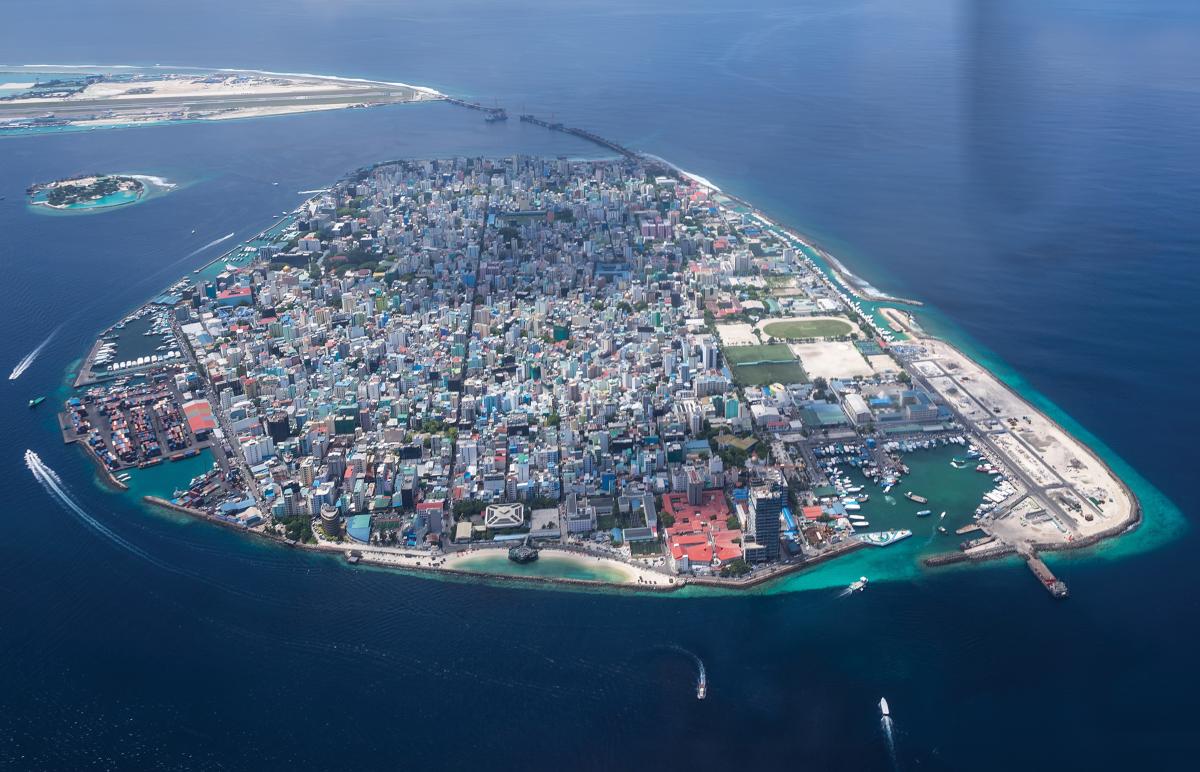
Experts estimate that sea-level rise will submerge Malé, capital of the Republic of the Maldives by 2100. (Shutterstock)
Mass migrations are major international political issues. Now there is an added concern: “climate refugees.” Climate change has warmed the world ocean and led to the melting of landbound ice in Greenland and Antarctica, and from the world’s 200,000 glaciers.
There are three major components to today’s sea-level rise: thermal expansion of the warming ocean (42 percent), melting glaciers (21 percent), and melting of the massive landbound ice sheets in Greenland (15 percent) and the Antarctic (8 percent). Scientists consistently have underestimated the melting rate of landbound ice. Measurements now show that the West Antarctic, the Antarctic Peninsula, and Greenland are melting at an accelerated rate. And this is not seasonal melt—it is a permanent loss.
In coastal areas there has been the realization that manmade remedies—such as coastal protection civil works—can only buy time, maybe decades, for those living there. And as difficult as it may be culturally and economically, those people do have a choice. Move inland. With eight of ten major cities in the world essentially in coastal plain areas, it is clear that major migrations must take place in the future.
There are 44 small island states, however, where the inhabitants cannot move inland. Several already have declared that they eventually will have to abandon their countries because of flooding. Now, the populations of entire nations will have to migrate.
Two examples of those drowning states are Kiribati and the Maldives; one in the Central Pacific and the other in the Indian Ocean.
The 33 islands and atolls that make up the Republic of Kiribati (population 113,000) on average are only 26 feet above sea level. With an increasing number of severe weather events caused by global warming, much of the country now suffers when high seas overtop some of its islands. The percolation of seawater into the soil affects fresh water aquifers and contaminates limited lands used for agriculture.
In 2014, Anote Tong, Kiribati’s president (2003–16), negotiated the purchase of land in Fiji for food production as that capability was diminished in his country. With an eye toward the future, he hopes his climate refugee countrymen eventually can settle in that new land. At present rates of sea-level rise, this nation of islands will become drowned by the end of this century.
The Indian Ocean nation of the Maldives (population 428,000) consists of 1,192 low-lying coral islands with an average height of 5 feet. The highest terrestrial point in the crowded capital city Malé is only 6 feet. Experts estimate that at current rates of change, sea-level rise will submerge this nation by 2100.
These are but two examples of coral island nations that will have to be abandoned before the 21st century ends. And, because scientists consistently have underestimated sea-level rise, migrations of these nations could be much sooner.
The question is, where does the population of a drowned nation go? These climate refugees do not want a diaspora where they cannot maintain their national cultural integrity wherever they settle. While the numbers of people to be relocated may be small, these are still mass migrations as they involve the entire populations of sovereign countries.
In 2018, the United Nations developed a “Global Compact for Safe, Orderly and Regular Migration.” It will address the worldwide problems and propose remedies for climate-driven migration. Member states are expected to approve it by the end of the year.
According to the United Nations, in 2015 52 million people were “forced refugees,” and the number is growing. Eventually, island peoples will be added to this refugee population. Since very few of the at-risk island states have more than 100,000 people, getting their voices heard may be difficult.


